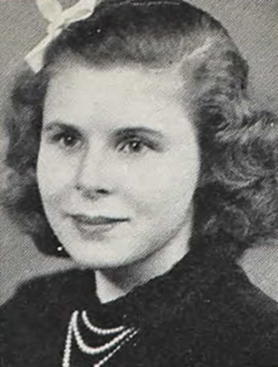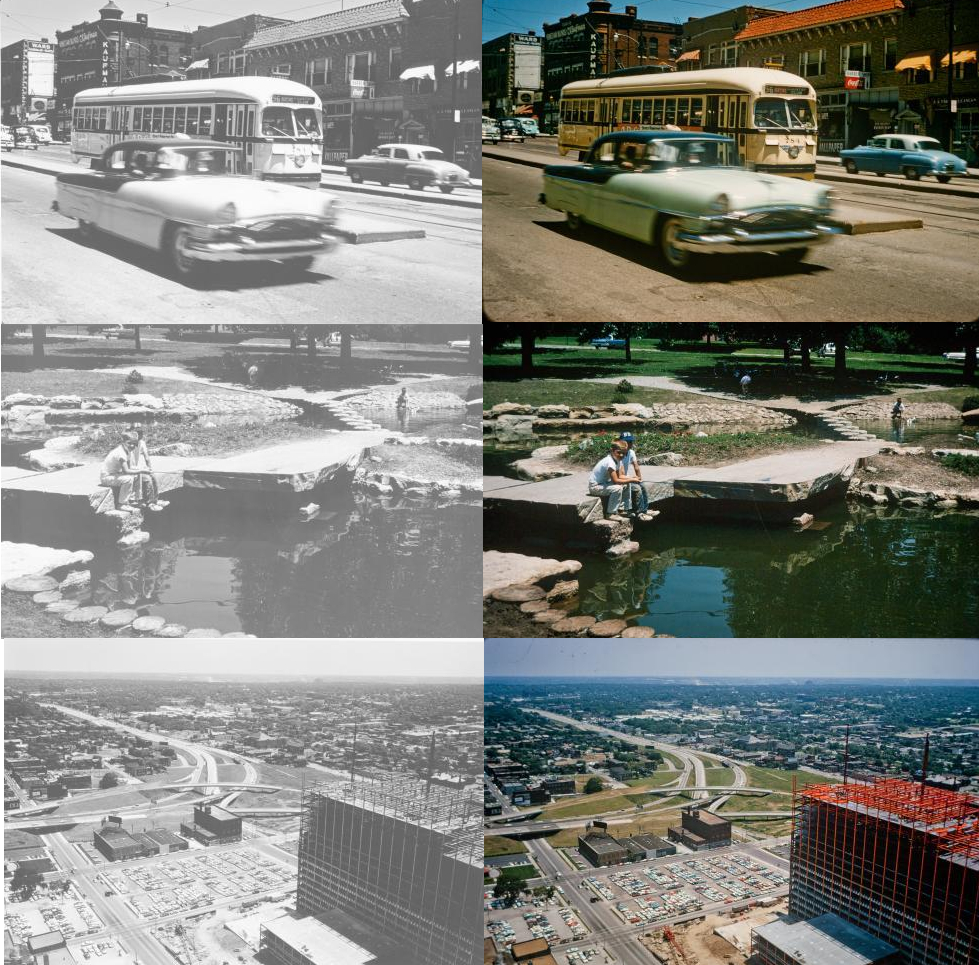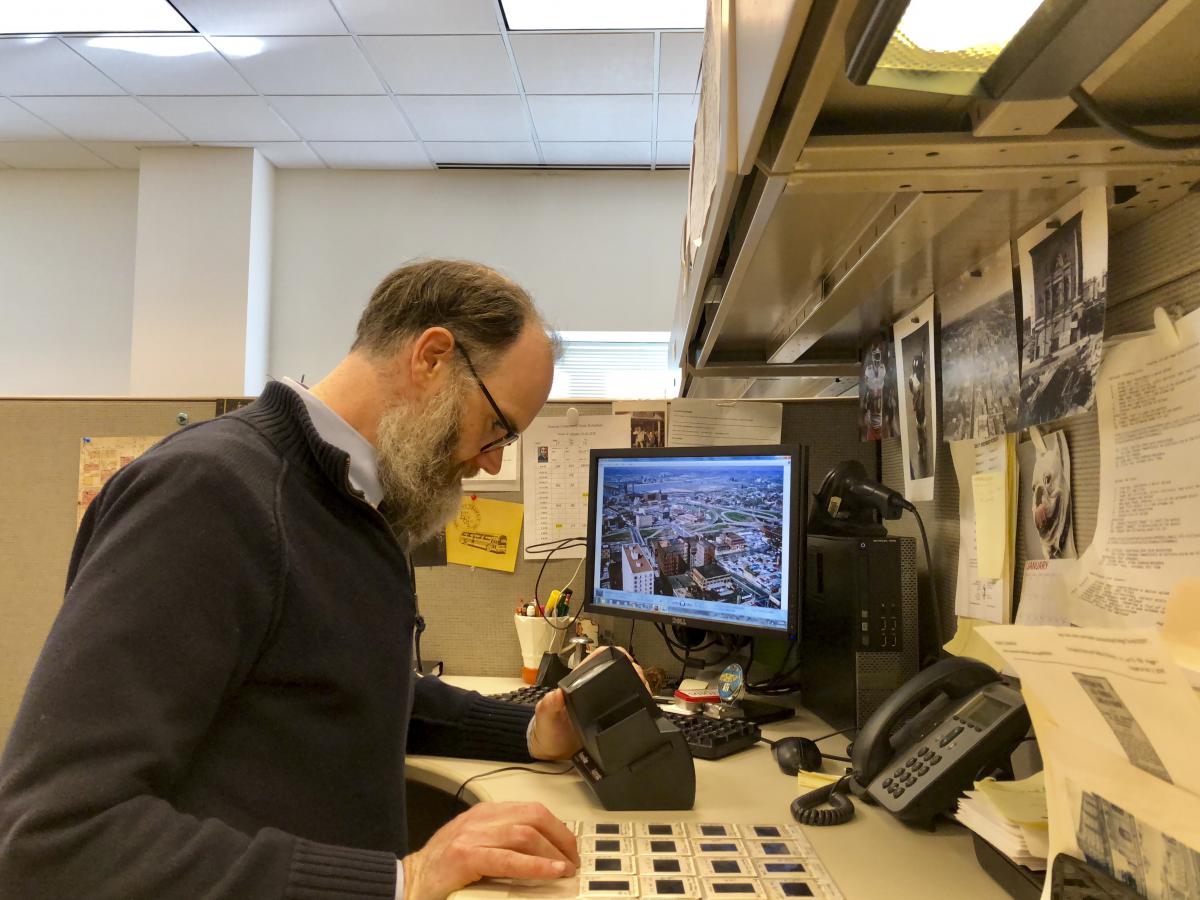Very little is known about Dorothea Helene Eldridge. We know that she was born in Kansas City in 1922 to parents Dr. Charles J. and Dorothea Eldridge. We know that she graduated from Southwest High School in 1940. We know that she attended the University of Kansas City. We know that she was a librarian. And we know that she relocated to Denver after retiring, where she passed away in 1997.

Aside from that list of facts, we also know that at some point she or someone she knew donated a set of 108 color photo slides that capture life in Kansas City in the 1950s and 60s to the Plaza Branch of the Kansas City Public Library. The slides were transferred to Missouri Valley Special Collections at the Central Library in 1995, at which point 24 black and white photographic prints from selected slides were created and scanned. For 20 years this is how Eldridge’s slides were made available to the public.

Recently the images she captured were rescanned at a higher resolution and in color, which really is how they should be presented considering the medium, Kodachrome slides. Kodachrome film was developed during the early 20th century as a solution to how inaccurately film captured color. Kodak made the film commercially available for still photography for the first time in 1936, but its widespread use would not take off until the 1960s when advancements in the technology made it more affordable for consumers. Kodachrome slides were steadily used through the early 1980s when cheap photographic prints of 35mm film made slide projectors obsolete.
However, in its heyday, Kodachrome processing produced color slides known for their high contrast and vivid colors that were perfect for slide projection, and these characteristics are on full display within Eldridge’s images of Kansas City during a transformative era.

Beginning in the early 1950s, federal funding flowed into American cities setting off a decades long period of urban renewal. The urban landscape of Kansas City changed dramatically during these years and Eldridge seems to have been keenly interested in these changes, her camera taking aim at buildings that have long ago disappeared, new construction, expressways beginning to slice their way through the city, and the beginnings of modern life in Kansas City. Her slides are an invaluable time capsule of a specific time and place and we are proud to now make them available to the public as they were meant to be seen.

Click here to access the full collection.
